| 24 August |
• yesterday • tomorrow |
| Feast of Saint Bartholomew, Apostle |
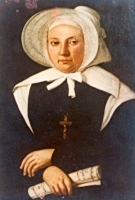
• Anne Marguerite Adelaide Emily de Vialar
• Emilie de Vialar
• Emilie de Vialard
Born to an aristocratic family, the eldest of three children, and only daughter of Baron James Augustine and Antoinette de Vialar. Because of the anti-Church sentiment of the years following the French Revolution, Emily was baptized in secret, and was taught religion at home by her mother. Sent at age 7 to Paris, France for her education. Her mother died when Emily was 15, and the girl returned home. She managed her father's house until she was 35 years old, privately devoting herself to a life of celibacy and prayer, and occasionally arguing with her father over her desire to enter religious life.
Upon receiving a large inheritance from her grandfather, Emily and three other women founded the Sisters of Saint Joseph of the Apparition on Christmas Day in 1832; the Apparition refers to the appearance of Gabriel to Joseph, telling him to flee to Egypt. In 1835, Emily and several of the Sisters arrived in Algeria to help the sick during a cholera epidemic, and begin her dream of missionary work. Beginning in 1840 she tried to obtain papal approval of the Sisters, but secular politics between France and Algeria, and Church politics involving Bishop Dupuch of Alger prevented the recognition until 31 March 1862, several years after Emilie's death.
During the next few years Emily established 14 new houses, travelled extensively, and sent missionaries anywhere that would accept them. This put a heavy strain on her inheritence, which had been mismanaged by her financial advisor. By 1851 she was bankrupt. Because of the money trouble, the reputation of Emily and of the Sisters suffered, and they were so poor that they sometimes ate in soup kitchens run by other Congregations. Emily finally moved them all, establishing the mother-house of the Sisters in Marseilles, France where, with the help of the bishop, Saint Eugene de Mazenod, she began to build up her congregation again. In the years until her death, she established 40 houses in Europe, Africa, and Asia, and the Sisters continue their good work all over the world today.
12 September 1797 at Gaillace, Albi, southern France as Anne Marguerite Adelaide Emily de Vialar
24 August 1856 at Marseilles, Bouches-du-Rhône, France of natural causes
24 June 1951 by Pope Pius XII
Since God does so much for me, what could I not do for him? - Saint Emily
https://catholicsaints.info/saint-emily-de-vialar/
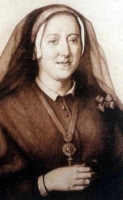
• Micaela Desmaisières López de Dicastillo
• Maria Micaela Desmaisieres
• Maria Michela Desmaisières of the Blessed Sacrament
• María de la Soledad, Micaela, Agustina, Antonia, Bibiana, Desmaissières y López de Dicastillo, Vizcondesa de Jorbalán
The daughter of Miguel Desmaisières y Flores, a high-ranking officer in the Spanish army, and Bernarda López de Dicastillo y Olmeda, a lady-in-waiting to Queen Maria Luisa de Parma of Spain; her mother was known for her charity to the sick and poor. Her mother died when Micaela was a young girl; her brother Diego was a Spanish ambassador, she often travelled with him, and thus she grew up in the circles of the Spanish and French nobility, the courts of the kings of Spain, France and Belgium. She was educated by Uruslines, and served as catechist to younger children. She received the title of Viscountess of Jorbalán. But even in the whirl of worldly life, she felt a pull to religious life, refused all the many offers of marriage, and spent much time in Eucharistic Adoration.
On 6 February 1844 she had experience that help her choose her final vocation. At the Saint John of God Hospital in Madrid, Spain, she met a girl, the daughter of a banker, who had been briefly drawn into prostitution; she had became an outcast and faced a life of poverty. Micaela used her social connections to get the funds to establish a home for women of any station in life who had fallen into prostitution as their only way to survive. More than just a shelter, the women received religious and secular educations. There were so many in need of help that Micaela was soon overwhelmed, and on 1 March 1856 officially founded the an order of sisters, the Handmaids of the Blessed Sacrament and of Charity, to work with the women. Saint Anthony Mary Claret became her confessor in 1857. The Handmaids were approved by Pope Pius IX in 1860. Micaela served as their leader until she contracted a fatal bout of cholera while caring for sick women, including many of her Handmaid sisters.
1 January 1809 in Madrid, Spain
24 August 1865 in Valencia, Spain of cholera
4 March 1934 by Pope Pius XI
https://catholicsaints.info/saint-maria-micaela-of-the-blessed-sacrament/
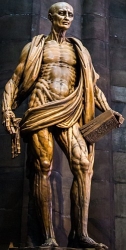
Bartolomé, Bartolomeo, Nathanael bar Tolomai
11 June (Orthodox calendar)
One of the Twelves Apostles. Probably a close friend of Saint Philip; Bartholomew's name is always mentioned in the Gospels in connection with Philip, and it was Philip who brought Bartholomew to Jesus. May have written a gospel, now lost; it is mentioned in other writings of the time. May have preached in Asia Minor, Ethiopia, India and Armenia; some one did, leaving behind assorted writings, and local tradition says it was Bartholomew. Martyr.
Galilee
• flayed alive at Albanopolis, Armenia
• relics at Saint Bartholomew-on-the-Tiber Church, Rome, Italy, and in the cathedral in Canterbury, England
• against nervous diseases
• against neurological diseases
• against twitching
• bookbinders
• butchers
• cobblers
• Florentine cheese merchants
• Florentine salt merchants
• leather workers
• plasterers
• shoemakers
• tanners
• trappers
• whiteners
• Armenia
• 16 cities in various countries
• cross
• elderly man holding a tanner's knife and a human skin
• tanner's knife
• bright red (skinless) man holding his own skin
https://catholicsaints.info/saint-bartholomew-the-apostle/
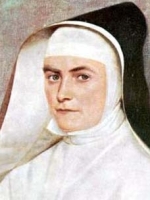
• Joan Antide Thouret
• Jeanne Antide Thouret
Daughter of a tanner. Her mother died when Jane was 16 years old, leaving the girl to manage the family and help her father raise her younger siblings. Joined the Sisters of Charity of Saint Vincent de Paul in 1787 at Paris, France, and worked in various hospitals over the next five years. During the suppression of religious orders in the French Revolution, she was ordered to return home to a secular life. Jane refused, and tried to escape the authorities; she was beaten so badly that it took months to recover.
She finally returned on foot to Sancey-de-Long where she cared for the sick, and opened a small school for girls. In the late 1790's the government repression forced her to flee to Switzerland. There she teamed up with other exiled religious and clergy to minister to the sick. However, due to anti-Catholic prejudice in the area, the group was forced to move on to Germany.
Jane later returned to Landeron, Switzerland where she met with her order's Vicar-General of Besançon. He asked her to found a school and hospital for her Order, and in 1799 the school opened in Besançon, France. The congregation Jane founded to run these institutions was the Institute of the Daughters of Saint Vincent de Paul. The group soon began to expand, to operate other schools and hospitals in France, Switzerland, and Italy, and moved into prison ministry. The Institute received papal approval in 1819.
27 November 1765 at Sancy-le-Long, diocese of Besançon, France
24 August 1826 at Naples, Italy of natural causes
14 January 1934 by Pope Pius XI
https://catholicsaints.info/saint-jane-antide-thouret/
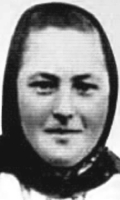
The eldest of four children in her family, Veronica was taught Christianity by her pious grandmother. When she was old enough, the girl would walk five miles each day to Halaucesti, Romania for daily Mass at the closest church to her home. Veronica was drawn to religious life, but all religious orders had been outlawed by the Communist government, so she joined the lay Franciscan at age 17. She helped care for the local sick and poor, taught catechism to children, and prayed in a cell she constructed in her parent’s house. On the evening of 24 August 1958, Veronica stayed after Mass to clean up the church, then began praying the rosary as she walked home. On the road she was attacked by a neighbor who demanded sex, and when she refused, stabbed her to death. Considered a Martyr of Chastity.
7 December 1935 in Nisiporesti, Botesti, Neamt, Romania
stabbed 42 times and left to bleed out on the evening of 24 August 1958 in a cornfield near Halaucesti, Iasi, Romania
• 22 September 2018 by Pope Francis
• beatification celebrated at the Church of Adormirea Maicii Domnului, Nisiporesti, Romania, presided by Cardinal Giovanni Angelo Becciu
• Franciscan Father Anton Demeter had hidden materials about her life and death, and was only able to start the beatification process after the end of Communist rule in 1989
• first Romanian woman to be beatified
• first Romanian lay person formally honoured as a martyr from the period of Communist rule
https://catholicsaints.info/blessed-veronica-antal/

Aldwin, Audaenus, Audeon, Audoeno, Audoen, Audoenus, Audoin, Dado, Dadon, Owen
Son of Aiga Saint Authaire of La-Ferté. Acquainted with Saint Columbanus, Saint Faro of Meaux, and Saint Aile. Educated at Saint Medard abbey. Served in the courts of King Clotaire II, King Dagobert I, and King Clovis II. Chancellor to Dagobert and Clovis. Friend of Saint Wandrille, Saint Romanus of Rouen, Saint Didier, and Saint Sulpicius Pius; teacher of Saint Philibert of Jumièges. Though a layman, he founded a monastery at Rebaisin the forest of Brie in 636 on land donated by Dagobert; he wanted to retire to it, but Dagobert would not relieve him on his responsibilities. Priest. Archbishop of Rouen, France in 641. Convoked the Synod of Chalons in 644 to fight against simony, a battle he had started as a layman. Friend, confrere, and biographer of Saint Eligius. Advisor to Queen Saint Bathild. Brokered a peace between Neustria and Austrasia for King Thierry III. Known for his personal austerities and support of many charities, he founded several monasteries in his diocese, and sent missionaries to the pagans in his see.
c.605 at Sancy, Soissons, France
• 24 August 684 at Clichy, France of natural causes
• buried at Saint Ouen's cathedral, Rouen, France
• relics reported to heal deafness
• against deafness
• deaf people
https://catholicsaints.info/saint-ouen-of-rouen/
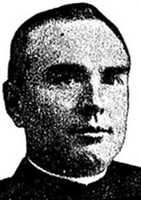
Born to a pious farming family, Luis was baptized at the age of three days; his sister became a Poor Clare prioress, and two nephews were priests. Luis studied in seminaries in Almería and Granada, Spain, and was ordained a priest in the archdiocese of Granada on 18 May 1906. He served as a parish priest in several locations, and in 1911 was assigned to Alicún, Spain where there were only the ruins of a church and he had to start the parish from scratch. In 1913 he was sent to Huécija, Spain where he became a much-loved pastor for many years.
On 19 August 1936, he was seized by anti–Catholic forces in the Spanish Civil War, and imprisoned in Alhama de Almería. His family paid a bribe to get him released, but Father Luis was seized again and imprisoned in Huécija. The guards offered to release him if he would spit on the cross that he carried; in response, he kissed the cross. Martyr.
23 April 1883 in Illar, Almería, Spain
24 August 1936 in Puente de los Calvos, Ráglos, Almería, Spain
• 25 March 2017 by Pope Francis
• beatification celebrated in the Palacio de Exposiciones y Congresos de Aguadulce, Almería, Spain, presided by Cardinal Angelo Amato
https://catholicsaints.info/blessed-luis-almecija-lazaro/
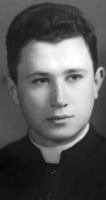
Studied at the Pontifical Gregorian University in Rome, Italy, but recalled to Croatia at the start of World War II. Priest in the diocese of Porec i Pula, Croatia, ordained in April 1943. Assigned to Baderna, the scene of armed conflict between Communist and Fascist forces. Parish priest in Kanfanar in 1945. Secretary of the local priests's association. Outspoken opponent of the abuses of local people by Communist forces. Martyr.
13 May 1920 in Cabrunici, Svetvincenat, Istarska, Croatia
stabbed in the neck on 24 August 1947 in Lanisce, Istarska, Croatia by a group of Communist sympathizers
• 28 September 2013 by Pope Francis
• beatification recognition celebrated by Cardinal Angelo Amato
All hate crimes are an abomination against religion, but the circumstances of the murder of Father Miroslav Bulesic were particularly loathsome. Human wickedness was vented on a helpless priest, and the wolf tore the lamb apart. Hatred extinguished a human life, which is always precious but was twice as priceless this time as the life of a good man. - Cardinal Angelo Amato at the beatification celebration for Blessed Miroslav
https://catholicsaints.info/blessed-miroslav-bulesic/
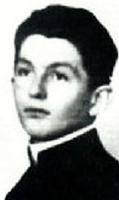
Maximilian
12 June as one of the 108 Martyrs of World War II
Maksymilian studied at the seminary in Czestochowa, Krakow, Poland, and then at the Jagiellonian University. He was ordained a priest in the archdiocese of Czestochowa in 1931. Prefect of a diocesan school in Wielun. Known as extremely intelligent, pious and comfortable in social situations. Arrested on 6 October 1941 and deported from occupied Poland to the Dachau concentration camp where he was imprisoned and tortured to death for his faith.
21 February 1908 in Zarnowiec, Slaskie, Poland
died from torture on 24 June 1942 in the prison camp at Dachau, Oberbayern, Germany
13 June 1999 by Pope John Paul II
He was a true man of God. I admired his spirit of prayer. He would come to the bed, beaten and battered, and when I fell asleep, he still whispered the words of the prayer. Extremely devoted and helpful, he offered his help to his fellow weaker and older. - Father Jan Kabzinski, a fellow prisoner with Blessed Maksymilian
https://catholicsaints.info/blessed-maksymilian-binkiewicz/
Spiritual student of Saint Paul the Apostle. May have been the young man raised from the dead by Paul at Troas in Acts 20. Worked with Saint John the Evangelist on Patmos. Imprisoned and tortured for his faith, but he avoided martyrdom.
1st century Phrygia
On the first day of the week when we gathered to break bread, Paul spoke to them because he was going to leave on the next day, and he kept on speaking until midnight. There were many lamps in the upstairs room where we were gathered, and a young man named Eutychus who was sitting on the window sill was sinking into a deep sleep as Paul talked on and on. Once overcome by sleep, he fell down from the third story and when he was picked up, he was dead. Paul went down, threw himself upon him, and said as he embraced him, "Don't be alarmed; there is life in him." Then he returned upstairs, broke the bread, and ate; after a long conversation that lasted until daybreak, he departed. And they took the boy away alive and were immeasurably comforted. - Acts 20:7-12
https://catholicsaints.info/saint-eutychius-of-troas/
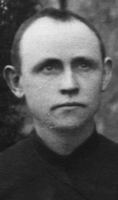
• Jorge Luis
• Aniceto Lizasoáin Lizaso
• Aniceto María Miguel
The son of Miguel Ángel Lizasoain and Francisca Lizaso; he was baptized at the age of one day, and grew up speaking the Basque language. He was known as a good student, a great team mate in sports, and for an early call to religious life. He had some trouble in seminary as Spanish was his second language, and difficult for him. He joined the Redemptorists on 15 October 1895, making his profession on 15 October 1896, and taking the name Aniceto María Miguel. Martyred in the Spanish Civil War.
8pm on 4 September 1886 at 17 Calle de San Juan, Irañeta, Navarra, Spain
24 August 1936 in Toledo, Spain
13 October 2013 by Pope Francis
https://catholicsaints.info/blessed-lorenzo-lizasoain-lizaso/
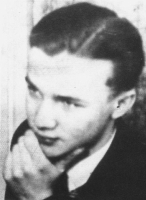
12 June as one of the 108 Martyrs of World War II
Son of a poor cobbler in the archdiocese of Poznan, Poland. He managed to finish elementary school, but had to leave to work to help the family. A pious boy, he joined the Salesian youth oratory and spent his free time there in Eucharistic adoration, singing in the choir and as a soloist, and writing music. Made the pilgrimage to Czestokowa, walking over 300 miles to the shrine. Martyred in the Nazi persecutions of World War II.
1 October 1919 Poznan, Wielkopolskie, Poland
guillotined on 24 August 1942 in Dresden, Germany
13 June 1999 by Pope John Paul II in Warsaw, Poland
https://catholicsaints.info/blessed-edward-kazmierski/
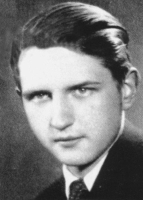
12 June as one of the 108 Martyrs of World War II
Young layman in the archdiocese of Poznan, Poland, the son of an alcoholic manager of a cosmetics shop who eventually abandoned the family. Jarogniew found the Saleisan oratory and it became a second home. Played piano. He became a pious young man who thought deeply, worked for a thorough understanding of events, and became a natural leader. Martyred in the Nazi persecutions of World War II.
5 November 1922 Poznan, Wielkopolskie, Poland
guillotined on 24 August 1942 in Dresden, Germany
13 June 1999 by Pope John Paul II in Warsaw, Poland
https://catholicsaints.info/blessed-jarogniew-wojciechowski/
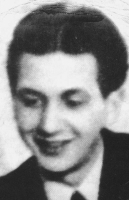
12 June as one of the 108 Martyrs of World War II
Young layman in the archdiocese of Poznan, Poland, the son of a carpenter who moved to Poznan for work. Franciszek planned to enter the Salesian novitiate, but the German invasion of Poland in 1939 intervened. He worked in a factory, spent his free time at the Salesian oratory, went to Mass every morning, prayed a rosary every night, helped anyone in any way that he could, and was martyred in the Nazi persecutions.
13 November 1920 in Berlin, Germany
guillotined on 24 August 1942 in Dresden, Germany
13 June 1999 by Pope John Paul II in Warsaw, Poland
https://catholicsaints.info/blessed-franciszek-kesy/
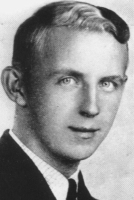
12 June as one of the 108 Martyrs of World War II
Young layman in the archdiocese of Poznan, Poland; his sister became an Ursuline nun. Educated by Salesians in Oswiecim, Poland. Construction worker. A serious and mature young man, he had a great devotion to Eucharistic adoration and the teachings of Saint John Bosco. Martyred in the Nazi persecutions of World War II.
21 July 1919 in Bochum, Wielkopolskie, Poland
guillotined on 24 August 1942 in Dresden, Germany
13 June 1999 by Pope John Paul II in Warsaw, Poland
https://catholicsaints.info/blessed-edward-klinik/
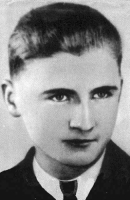
12 June as one of the 108 Martyrs of World War II
Son of a police officer in the archdiocese of Poznan, Poland, Czeslaw was educated by the Salesians. Member of the Salesian youth oratory. When the Nazis invaded Poland in 1939, he was forced to leave school and found work in a cosmetics shop. Martyred in the Nazi persecutions.
7 September 1919 in Lazyn, Kujawsko-Pomorskie, Poland
guillotined on 24 August 1942 in Dresden, Germany
13 June 1999 by Pope John Paul II in Warsaw, Poland
https://catholicsaints.info/blessed-czeslaw-jozwiak/
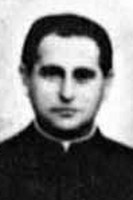
Joined the Salesians at Carabanchel Alto, Madrid, Spain, making his vows on 13 September 1907. Priest, ordained in Campello, Spain on 18 July 1915. Arrested with his entire community on 20 July 1936. Released, he immediately resumed his ministry, which led to his re-arrest. Martyred in the Spanish Civil War.
17 April 1888 in Ledesma, Salamanca, Spain
shot on 24 August 1936 in Madrid, Spain
28 October 2007 by Pope Benedict XVI
https://catholicsaints.info/blessed-felix-gonzalez-tejedor/
2 January as one of the Martyrs of Anjou
Priest of the diocese of Angers, France. Martyred in the persecutions of the French Revolution for refusing to take the oath of allegience to the Civil Constitution of the Clergy, which would have put his vocation under government control.
19 November 1761 in Soucelles, Maine-et-Loire, France
beheaded on 24 August 1794 at Angers, Maine-et-Loire, France
19 February 1984 by Pope John Paul II at Rome, Italy
https://catholicsaints.info/blessed-andre-fardeau/
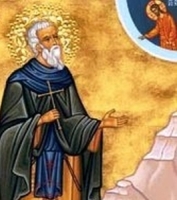
Hermit at Mount Olympus, Bithynia, Asia Minor. Martyred at age 95 under Leo the Isaurian for opposing the iconoclasts.
c.635
mutilated and burned to death c.730
https://catholicsaints.info/saint-george-limniotes/
• Apostle of the Picts
• Erthad, Merchard, Yarcard, Yrchard
Seventh century spiritual student of Saint Ternan of Culross. Bishop, consecrated in Rome, Italy by Pope Gregory the Great.
at Kincardineshire, Scotland
https://catholicsaints.info/saint-irchard/
Tradition says he was a spiritual student of Saint Peter the Apostle. Bishop of Nepi, Italy. Spiritual teacher of Saint Romanus of Nepi. Martyr.
martyred in the 1st century in Nepi, Italy
Nepi, Italy
https://catholicsaints.info/saint-ptolemy-of-nepi/
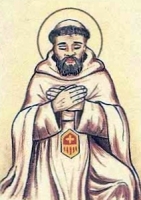
Mercedarian who freed 208 Christians who had been enslaved in northern Africa by Muslims.
1415
https://catholicsaints.info/blessed-antonio-de-blanes/
Sandradus
Monk in Trier, Germany. Sent by Emperor Otto I to restore the monastery of Saint Gall in 972. Abbot of Gladbach Abbey. Abbot of Weissenburg Abbey in 981.
986
https://catholicsaints.info/saint-sandratus/
Spiritual student of Saint Ptolemy of Nepi. Bishop of Nepi, Italy. Martyr.
martyred in the 1st century in Nepi, Italy
Nepi, Italy
https://catholicsaints.info/saint-romanus-of-nepi/
Tatian, Tatio, Tazione
Martyr.
Claudiopolis, Asia Minor (in modern Turkey)
https://catholicsaints.info/saint-taziano-of-claudiopolis/
Agofroi
Brother of Saint Leofridus. Benedictine monk. Abbot of Lacroix Abbey in Normandy, France in 738.
https://catholicsaints.info/saint-agofridus-of-lacroix/
Bishop in Ireland.
• c.450 of natural causes
• relics later enshrined at Glastonbury, England
https://catholicsaints.info/saint-patrick-the-elder/
No information has survived.
Irish
https://catholicsaints.info/saint-abban-24-august/
Abycia
Nun in England. Prioress.
https://catholicsaints.info/saint-abyce/
Thousands of people were murdered in the anti-Catholic persecutions of the Spanish Civil War from 1934 to 1939. I have pages on each of them, but in most cases I have only found very minimal information. They are available on the CatholicSaints.Info site through these links:
• Félix González Tejedor
• Fortunato Velasco Tobar
• Isidre Torres Balsells
• Rigoberto Aquilino de Anta Barrio
• Maria Encarnaciòn Rosal
CatholicSaints.Info Portable Edition